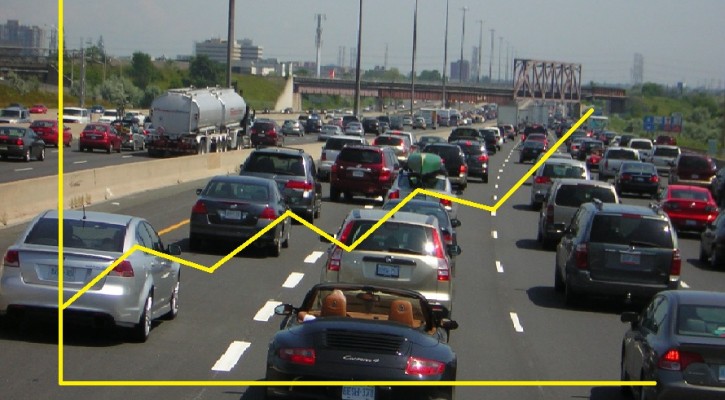
A Single Statistic: Anti-Texting Laws
October 9, 2014
Do Anti-texting laws work? A recent study shows that understanding a single statistic can change the public’s attitude on the need for safe driving laws. With that in mind, we are posting a series of single statistics on a variety of traffic safety issues. Many lawmakers are reluctant to enact driving safety laws because they feel – rightly or wrongly – that the public doesn’t support such reforms. If your state legislature is debating a traffic safety issue, it’s hoped that this single statistic will provide the public with the knowledge needed to make informed decisions that they can then share with their representatives.
The Issue: Anti-texting laws
- According to the Center for Disease Control, 31% of U.S. drivers ages 18-64 reported that they had read or sent text messages or email messages while driving at least once within the 30 days before they were surveyed.
- In 2011, 3,331 people were killed in crashes involving a distracted driver, compared to 3,267 in 2010.
- According to Distraction.gov, 10% of all drivers under the age of 20 involved in fatal crashes were reported as distracted at the time of the crash. This age group has the largest proportion of drivers who were distracted.
- A quarter of teens respond to a text message once or more every time they drive.
The Risks:
- When texting, a driver’s eyes are off the road for approximately five seconds. In five seconds, at 40 mph, a car will travel 330 feet. That’s equivalent to driving more than the length of a football field while blindfolded.
- Engaging in visual-manual subtasks (such as reaching for a phone, dialing and texting) associated with the use of hand-held phones and other portable devices increased the risk of getting into a crash by three times.
Primary or Secondary Anti-texting laws:
- Some states have passed “primary” laws banning texting by all or a portion of their drivers. A primary anti-texting law allows law enforcement to stop and ticket a driver just for texting while driving.
- Other states have passed “secondary” anti-texting laws. With a secondary law, law enforcement can only issue an anti-texting ticket to a driver if they witness a driver engaged in another primary driving offense such as speeding or running a red light while texting.
To see a list of states with primary or secondary cell phone and anti-texting laws, visit: Cellphones and texting
The Single Statistic:
According to a study by the University of Alabama at Birmingham School of Public Health:
- Primary anti-texting laws were associated with a three percent reduction in traffic deaths among all age groups.
- Primary texting laws that only target young drivers were associated with an 11 percent reduction of fatalities among the 15 to 21 year age group.
- States with secondarily enforced or no restrictions did not see any significant reductions in traffic fatalities.
Find your representative:
If you wish to share your thoughts on this issue with your state representatives, you can find their contact information by visiting: Find Your State Legislator – Open States

A single statistic can increase public support for traffic safety laws
October 8, 2014
Awareness of a single statistic can change public attitudes regarding the need for certain traffic laws according to a study conducted by the Johns Hopkins Center for Injury Research and Policy at the Johns Hopkins Bloomberg School of Public Health.
The researchers surveyed 2,397 adults across the nation concerning their opinion (for or against) of four separate traffic safety laws – mandatory use of bicycle helmets for children under 16, the use of red-light cameras in school zones, mandatory ignition interlock installation for people convicted of driving under the influence (DUI) and a requirement that in-vehicle information entertainment systems be disabled when a car is moving.
After tabulating the results, the respondents were given a statistic showing the injury risk associated with the law or the ability of the law to reduce those injuries. They were then given another survey on their attitudes toward the laws. After viewing the statistics, the number of respondents showing support for the laws increased dramatically.
In the first survey a majority of respondents reported that they were supportive or strongly supportive of the laws:
- 74.8 percent favored mandatory use of bicycle helmets for children under 16
- 74.4 percent favored mandatory ignition interlock installation for people convicted of driving under the influence (DUI)
- 61.4 requirement that in-vehicle information entertainment systems be disabled when a car is moving.
- 58 percent favored use of red-light cameras in school zones
After receiving statistic showing the law’s effectiveness in preventing injuries, respondents showing support for the laws increased by:
- 30.7 percent for requirement that in-vehicle information entertainment systems be disabled when a car is moving.
- 22.2 percent for use of red-light cameras in school zones
- 20 percent for mandatory use of bicycle helmets for children under 16
- 20 percent for mandatory ignition interlock installation for people convicted of driving under the influence (DUI)
State legislators are often wary of enacting new traffic safety laws because they feel that the public won’t support the measure. However, in many cases, either the legislators have failed to properly gauge public support or those in favor of the law have failed to make their voices heard.
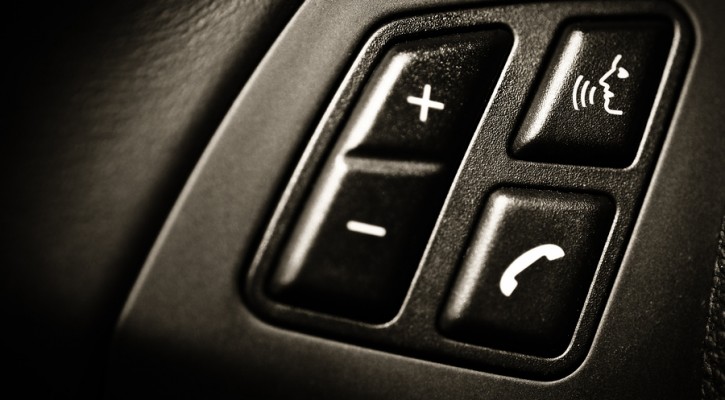
Are Technology Companies Trying To Kill Us?
October 7, 2014
To stay competitive, computer technology companies are always in a rush to come out with the latest and greatest new gizmo that people didn’t even know they wanted or needed. When it comes to motor vehicles, some of the new technology can help to make driving safer but most of the new technology will, in all probability, add to the dangers on the road. Let’s look at some of the latest innovations and how they could impact driving safety.
Wireless Connectivity
We’ve already addressed the push by the federal government to develop wireless connectivity in motor vehicles to enable cars to “talk” to each other. It’s hoped that this technology (known as Vehicle-to-Vehicle communication, or V2V) will warn a driver if another car is on a collision path. It could save a lot of lives but that technology is quite a few years away. However, automakers and mobile phone companies are rushing to add wireless technology to cars now; not to keep track of other vehicles other vehicles but to allow vehicle occupants access to the web at all times. The argument could be made that they aren’t advocating that drivers use computers but, human nature being what it is, many will be tempted to use their computers while driving.
Google Glass
With Google Glass, a driver won’t need a laptop. He or she can have access to a computer screen at all times. The inventors of this device say the underlying principle isn’t meant to distract but rather to connect people more to the world around them. Regardless of their intentions, reading emails or viewing stock reports while driving is a major distraction. Google is currently fighting efforts by some states to ban the use of Google Glass while driving.
Apple Watch and Android Wear “wristwatches”
Both Apple and Google are competing to put full computer technology into a wristwatch sized device. Both advertise the ability of their watches to allow the user to receive texts and emails. Now a driver can try to read his or her emails on a teeny tiny screen. A driving safety organization in Great Britain has already published a warning about the dangers of Apple Watch.
Bluetooth
Several automakers have incorporated Bluetooth technology into their cars enabling the driver to make hands free calls by syncing the driver’s phone to the car radio,. While at first, this may seem like a better option but a recent joint study by AAA and the University of Utah shows that the opposite is true. The results of their research show that using a hands free phone can be more distracting than just picking up the phone itself.
The best advice remains to put down the phone/ glass/watch and just concentrate on driving.
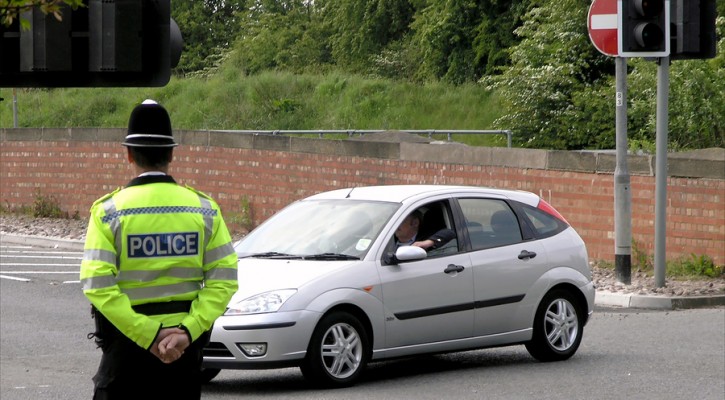
Driver Behavior VS Technology
September 24, 2014
Ignoring driver behavior in favor of technology is killing people according to an an editorial that is going viral on news websites. Leonard Evans, president of Science Serving Society writes that the US is failing in its efforts to prevent motor vehicle deaths because of its focus on the wrong area of automotive safety.
In his editorial, Dr. Evans cites the difference in traffic death rates between the US and other industrialized nations. Since the highest recorded highway death rates in 1972, the US traffic death rate has fallen by 41 percent however, during the same period, the Netherlands and Germany’s traffic fatality rates have fallen by 81 percent and Great Britain’s fell by 76 percent.
The difference between the US and the other top performing industrialized countries is the US reliance on technology to improve survival rates during a crash. Rather than relying on technology alone, the other top performing nations worked hard to prevent crashes altogether by changing driver behavior through a combined use of technology and enforcement of sensible traffic laws. Read more: U.S. traffic safety misleads the public
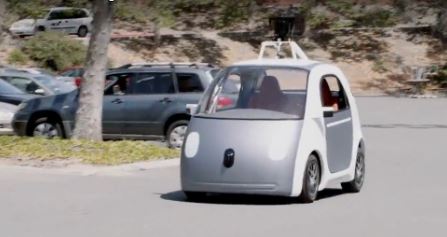
Driverless Cars: Myths and Reality
September 22, 2014
Driverless cars are coming closer to reality every day but they still have a long way to go. It’s going to be some time before governments and auto manufacturers can all agree on a common system that will allow driverless cars to communicate with each other, and the roadway.
Driverless cars could lead to a future with fewer traffic jams, lower commute times, more fuel efficiency, and, most important of all, safer driving. However, a driverless car that’s one hundred percent driverless and one hundred percent safe is probably something that may never be achieved.
Even the best of the driverless cars being tested on the road today can’t operate in adverse weather conditions such as heavy rain and snow. Could a computer algorithm accurately predict the actions of a drunk pedestrian trying to cross the road?
Anyone who’s had a cellphone call dropped due to a momentary loss of signal can imagine what the challenges for a driverless car could be. A pack of different types and sizes of driverless vehicles traveling at interstate speeds can’t afford to drive through a wireless signal blind spot.
Who is ultimately responsible if a crash should occur? Will the blame for human error in a crash pass from the driver to the computer programmer who wrote the car’s operating code? Who gets sued in a traffic crash; the owner of a driverless vehicle who assumed it was safe to travel under the influence or the cell phone company whose signal was lost?
To better understand the promise and fears of driverless cars, read: 8 truths and myths of driverless cars
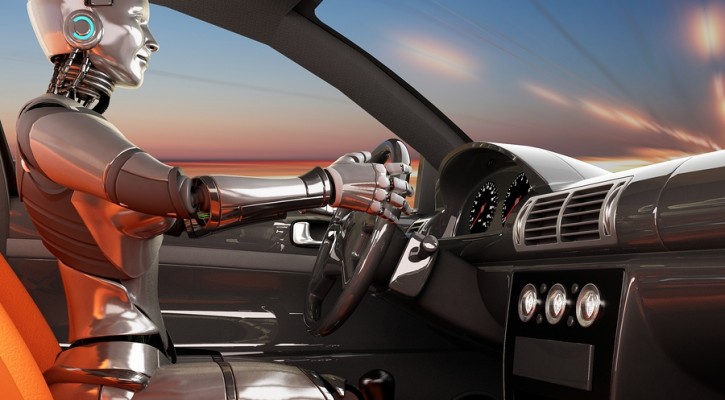
Crash-free Car Plans Announced By Automakers
September 11, 2014
Crash-free or almost crash-free cars may become a reality sooner than we thought. In previous articles, we discussed the shift by automotive engineers from designing cars to protect the occupants in a crash to avoiding the crash altogether through the use of collision-avoidance technology. Recently, two automakers announced plans to build crash-resistant and almost driver-free cars within the next couple of years. It seems that, while the Google car has been getting all the press, engineers from the mainstream auto manufacturers have been developing crash-free technology of their own.
Toyota announced last week that they will include collision-avoidance technology, currently only available in its Lexus luxury line, in the entire US model lineup beginning in 2017. The Lexus line currently has an active “Pre-Collision System.” If the onboard radar and cameras detect an imminent frontal crash, the system will warn the driver, boost brake pressure, and tighten up the seat belts. If the driver fails to heed the warning, the system will apply the brakes to avoid or at least reduce the crash forces of an impact. This differs from “passive” collision-avoidance systems that only warn the driver but otherwise, take no action to avoid the crash.
General Motors has taken it a step further in an announcement that their Cadillac line will contain technology that allows driving without hands on the steering wheel or feet on the pedals. GM’s technology, known as “Super Cruise,” can control the vehicle’s speed, steering, and braking at speeds up to 70 mph. The technology is designed to work both on the open road and in stop-and-go traffic. GM also announced that they will be the first auto manufacturer to equip their vehicles with vehicle-to-vehicle (V2V) technology within two years.
It’s not just a desire to protect the automotive public that’s driving these innovations, there are ulterior motives as well. Some automotive industry analysts feel that GM’s announcement is an effort to restore public trust after the recall scandal that they experienced earlier this year. Another reason for going forward with this type of technology is that the Insurance Institute for Highway Safety (IIHS), announced that, beginning in 2015, in order to get a “Top Safety Pick +” rating, vehicles will have to be equipped with auto-braking systems.
These technological innovations aren’t without their challenges. Last month, cyber-security experts raised the alarm over the ability of hackers to gain control of a vehicle’s computer system and possibly cause a crash. Earlier this week, David Friedman, acting administrator of the National Highway Traffic Safety Administration (NHTSA) announced that he sent a letter to the CEOs of every automaker asking that they come up with an automotive cyber-security plan by the end of the year.
Aside from the life-saving benefits of the crash-free systems, the technology will offer other benefits as well. Truly driverless cars will save time and money for consumers in several ways. Once all vehicles are equipped with V2V and collision avoidance technology, experts feel that, by maintaining a safe following distance and regulating speed, traffic will move much more smoothly and traffic jams could become a thing of the past. By not having to idle in stop-and-go traffic, miles per gallon should increase and braking systems will experience less wear. With crash-free technology, insurance rates should go down significantly, although it raises the question of who will be held to blame if a crash should occur, the driver or the manufacturer’s computer programmer.

Schools Should Start Later Say US Pediatricians
August 25, 2014
Middle and high schools should start later say the American Academy of Pediatrics. In a policy statement put out today by the organization, the Academy called on schools with students from the age of 10 and above to start no earlier than 8:30 AM. This is being done for health and safety reasons in order to ensure teens get enough sleep.
According to the Academy, teen sleep cycles naturally shift and it’s nearly impossible for the average teen to get to sleep earlier than 10:30 PM. Teens also need more sleep for their developing bodies. Schools that start too early prevent teens from getting a full night’s sleep. Only 15 percent of the nation’s schools start at 8:30 or later and 40 percent start earlier than 8:00 AM. A poll conducted by the National Sleep Foundation showed that 59 percent of middle school and 87 percent of high school students get the recommended amount of sleep each night.
We wrote on this subject back in 2010 in an article titled: School Start Times Related To Teen Crash Rate. Studies at that time showed that teens in schools that start too early have a higher crash rate and don’t perform as well academically compared to teens in school districts that start later.
The Academy of Pediatrics called on parents to start a dialogue with their local school boards to push for later start times. Read more: Pediatricians Say School Should Start Later For Teens’ Health
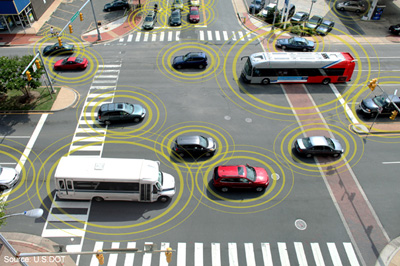
Cars Should Talk To Each Other Say Feds
August 22, 2014
Cars should talk to each other says the National Highway Transportation Safety Administration (NHTSA) and they announced earlier this week that they want to begin taking steps to allow cars to do just that.
Known as Vehicle-to-Vehicle communication, or V2V, the system would broadcast a vehicle’s speed and position to other vehicles nearby. According to NHTSA, the proposed system wouldn’t actually take steps to stop cars or take over steering if another vehicle came too close, it would only warn the driver if another vehicle appeared to be on a possible collision path. They also stressed that the system would not track a vehicle’s movements and it wouldn’t exchange or record personal information; the cars will only talk to each other.
Although it will take years to bring it to market, NHTSA feels that a system of this type would go a long way toward preventing most common types of crashes such as rear-end or left-turn collisions. Read more: Cars Talking to Each Other Will Save Lives, the Feds Say

Hackers Offer Suggestions For Hacker Proof Cars
August 19, 2014
A group of computer hackers calling themselves “I Am The Cavalry” have written an open letter to automakers calling on them to develop automobile computer systems that are hacker resistant. With cars growing ever more dependent on computer technology, the group expressed fears that hackers could infiltrate a car’s computer system and cause a crash. Continue Reading
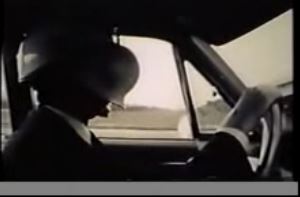
Blinding A Driver To Study Driver Distractions
August 18, 2014
By deliberately blinding himself on and off to study driver distractions, a researcher in 1963 took research to a new level while driving on a Boston highway. This mid-20th century experiment seems to anticipate one of the 21st century’s most dangerous driving issues. This is basically the same thing experienced by a driver while texting. Continue Reading
